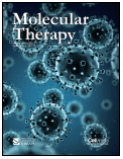 Dysferlinopathy is an autosomal recessive muscular dystrophy characterized by the progressive loss of motility that is caused by mutations throughout the DYSF gene. There are currently no approved therapies that ameliorate or reverse dysferlinopathy.
Dysferlinopathy is an autosomal recessive muscular dystrophy characterized by the progressive loss of motility that is caused by mutations throughout the DYSF gene. There are currently no approved therapies that ameliorate or reverse dysferlinopathy.
Gene delivery using adeno-associated vectors (AAVs) is a leading therapeutic strategy for genetic diseases; however, the large size of dysferlin cDNA (6.2 kB) precludes packaging into a single AAV capsid. Therefore, using 3D structural modeling and hypothesizing dysferlin C2 domain redundancy, a 30% smaller, dysferlin-like molecule amenable to single AAV vector packaging was engineered (termed Nano-Dysferlin). The intracellular distribution of Nano-Dysferlin was similar to wild-type dysferlin and neither demonstrated toxicity when overexpressed in dysferlin-deficient patient myoblasts. Intramuscular injection of AAV-Nano-Dysferlin in young dysferlin-deficient mice significantly improved muscle integrity and decreased muscle turnover 3 weeks after treatment, as determined by Evans blue dye uptake and central nucleated fibers, respectively. Systemically administered AAV-Nano-Dysferlin to young adult dysferlin-deficient mice restored motor function and improved muscle integrity nearly 8 months after a single injection.
These preclinical data are the first report of a smaller dysferlin variant tailored for AAV single particle delivery that restores motor function and, therefore, represents an attractive candidate for the treatment of dysferlinopathy.
